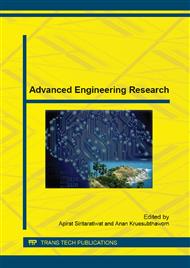p.475
p.479
p.483
p.487
p.491
p.495
p.500
p.507
p.511
Tracking from Unmanned Aerial Vehicles
Abstract:
We use multiple tracking agents in parallel for autonomously tracking an arbitrary target from an unmanned aerial vehicle. An object initially selected by a user from a possibly cluttered scene containing other static and moving objects and occlusions - both partial and complete - is tracked as long as it remains in view using a single light-weight camera readily installed in a UAV. We assumed, for the present, at least, that the UAV sends images to a ground station which controls it. We evaluated several individual tracking agents in terms of tracking success and their times for processing frames streamed from the UAV to the ground station at 25 fps, so that the system shoud compute results in 40ms. Histogram trackers were most successful at $\sim 10$ ms per frame which can be further optimized.
Info:
Periodical:
Pages:
491-494
Citation:
Online since:
August 2015
Authors:
Keywords:
Price:
Сopyright:
© 2015 Trans Tech Publications Ltd. All Rights Reserved
Share:
Citation:


